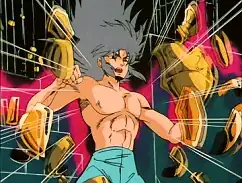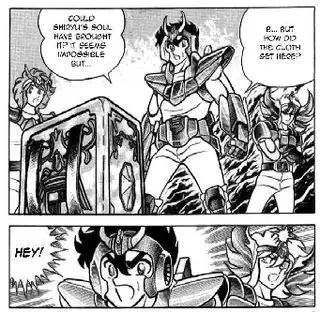The following is mostly copied from my answer on Scifi to a very similar question.
Anime and Manga are two different storytelling media. They both originate in Japan, and are closely related, but are ultimately two different things. The confusion between the two arises mostly because it's often the case that the same story will have both an anime and a manga version. The terminology will vary a little bit depending on whether the person you talk to is a Japanese person or a westerner; I'll try to point out where this happens.
Anime (アニメ, a shortened form of アニメーション, which is literally "animation" when written as a loanword in Japanese) are Japanese animated cartoon videos. These air on television or are released to home video. Producing an anime is a large undertaking, and requires the work of an animation studio with a large number of people.
There is some debate as to whether non-Japanese cartoons qualify as anime. A Japanese person would say that any cartoons at all can be included as anime, including western series like Avatar: The Last Airbender or Spongebob Squarepants. The word "anime" in Japanese is almost exactly equivalent to "cartoon" in English. Most people outside Japan use the term solely to refer to Japanese-origin series, or at least those which are inspired significantly by Japanese anime (so Avatar might count, but Spongebob certainly wouldn't).

An image from the Saint Seiya anime
Manga (漫画, which could be literally read as "whimsical drawings") are Japanese comics. Unlike anime, they're typically black and white. Manga are often used as the basis for anime, but not every anime is from a manga and most manga are never made into anime. Manga usually only require a small number of people to produce, at minimum a mangaka (who is the author, illustrator, and all other major roles) and an editor. Unlike western comic books, most manga are read right-to-left.
As with anime, Japanese fans wouldn't have much problem labeling comics from other countries as manga. In the English-speaking world, it's more complicated. OEL Manga (Original English Language Manga) is now a standard term for comics like Megatokyo which are inspired by manga but produced in English-speaking countries. There's also manhwa (Korean origin comics) and manhua (Chinese origin comics), both of which heavily borrow from manga. Japanese people would usually label all of these as Manga, but English-speakers will usually make the distinction.

A couple of panels from the Saint Seiya manga
As for what differentiates anime from cartoons, I'd suggest you look at What differentiates anime from regular cartoons?. There's no universal answer, and different people have different approaches for defining anime. Here's a summary of the answers there:
Some people (I suspect most) choose to define anime as just "cartoons originating in Japan" in which case there's no fundamental difference between anime and cartoons. The only differences are in terms of what are more common tropes, plot points, etc. Anime does often tend to be somewhat more mature than western cartoons, if only because there is a significant fraction that is produced for consumption by adults (whereas the vast majority of western animation is not primarily marketed to adults).
However, there are also stylistic differences between most western cartoons and most Japanese anime, and some people like to include non-Japanese works which are strongly inspired by Japanese art styles and storytelling, e.g. the Avatar series. This is a trickier business since it becomes very subjective as to what exactly qualifies as anime, so most professional anime organizations (e.g. Anime News Network) stick to the first definition and prefer to call these works "anime-inspired" or some other similar terms.

